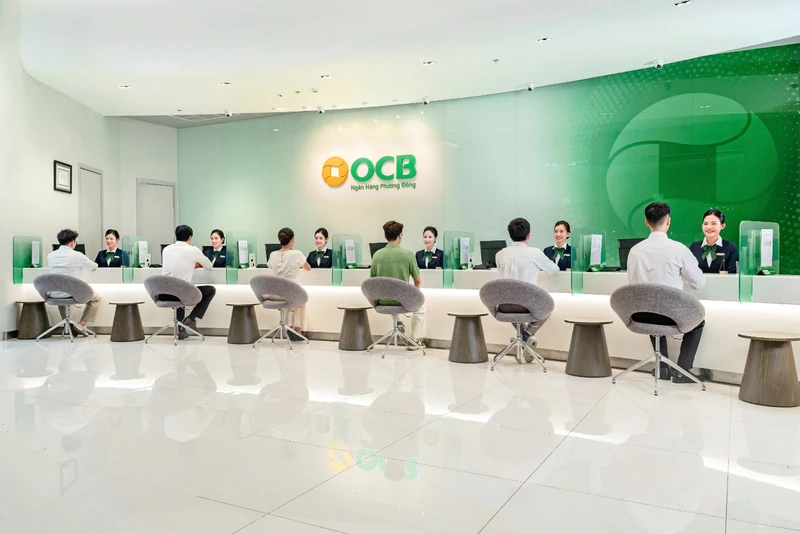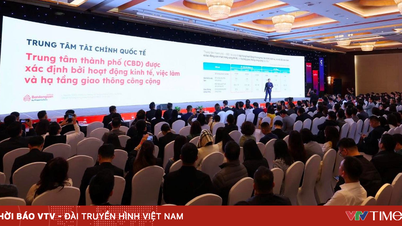As one of the pioneering banks in enhancing risk management capabilities through a series of key projects to improve its risk management framework according to international standards, since 2018,OCB has been recognized by the State Bank of Vietnam as one of the first three banks to complete risk management items according to the international Basel II standards. By 2022, OCB had successfully implemented Basel III standards in liquidity risk management and Basel II using the Internal Modeling Approach (IMA) for market risk management, along with applying the "Internal Liquidity Adequacy Assessment Standard as per the European Central Bank Regulation (ILAAP)".
In 2023, OCB announced the completion of the deployment and application of its cloud-based capital adequacy platform according to Basel II Advanced (Internal Approach - IRB), becoming the first bank in Vietnam to complete all advanced Basel requirements in international risk management standards. After two years of implementation, OCB has continuously improved its indicators regarding capital adequacy and strengthened its liquidity resilience against unforeseen events. Specifically, in 2024, the capital adequacy ratio (CAR), liquidity reserve ratio (LRR), loan-to-deposit ratio (LDR), and short-term capital to medium- and long-term loan ratio consistently complied with the regulations of the State Bank of Vietnam. In addition, OCB also holds highly liquid assets such as cash, government bonds, and interbank loans to ensure that the liquidity reserve ratio (LRR) complies with current regulations.
In addition, the bank also monitors its capital adequacy ratio (CAR), loan-to-credit limits (LCR), and loan-to-life ratio (NSFR) on a monthly basis to ensure compliance with international Basel risk management standards. This has shaped OCB's development towards sustainability, transparency, efficiency, and safety.
“In 2024, we regularly conducted internal capital adequacy assessments (ICAAP) and liquidity assessments (ILAAP) under complex scenarios, thereby affirming OCB's capacity to fulfill its financial obligations to customers and partners in potential situations, ensuring the stability of business operations in the short term, as well as having a stable capital plan to meet business development requirements,” - an OCB representative shared.
It is understood that at OCB, the risk appetite for 2024 is built on the objectives of strict and reasonably flexible risk control to ensure the bank's financial safety while remaining consistent with its business strategy. Therefore, key risk control indicators are always maintained and regularly reviewed, assessed, and adjusted promptly, creating conditions for OCB to expand its scale while ensuring strict risk control.
Thanks to its safe, efficient, and transparent operations built on a solid risk management foundation according to international standards, along with continuous improvements in this area over time, OCB has consistently received high ratings from Moody's for many years. Specifically, in 2024, the bank's credit rating was Ba3, with the outlook upgraded to "stable". This rating reflects OCB's stable financial capacity throughout the economic cycle, its good capital adequacy ratio, and expectations of improved asset quality in the future. In addition, Moody's maintained its long-term counterparty risk assessment (CRRs) for both foreign and domestic currencies at Ba3, and its long-term counterparty risk rating at Ba3 (cr).
This opens up many opportunities for OCB to continuously attract foreign capital from international financial institutions after undergoing extremely rigorous vetting and evaluation processes according to the standards of each institution, regarding operational quality and sound risk management, to ensure safe, transparent, and efficient development. In addition, throughout the loan period, the bank must strictly adhere to commitments regarding financial "health" indicators such as capital safety, asset quality, liquidity, etc.
This funding has been helping the bank's SME customer group, especially businesses owned by women, to access loans with preferential interest rates, serving investment and production-business development, in line with OCB's sustainable development strategy.
In 2025, with the goal of striving to place OCB among the top 5 leading private commercial banks in Vietnam in terms of efficiency and ESG, in addition to operational directions regarding business objectives, products and services, digital transformation, human resources, etc., OCB will continue to optimize governance, restructure its organizational model and capital management towards sustainability, alongside strengthening its risk management foundation.
Source: https://nhandan.vn/ocb-phat-develop-sustainably-with-effective-risk-management-platform-post877548.html

































![[Video] Hue and Quang Ninh mark strong tourism growth](https://vphoto.vietnam.vn/thumb/402x226/vietnam/resource/IMAGE/2025/12/12/1765555481742_dung00-22-16-02still007-jpg.webp)
















































































Comment (0)